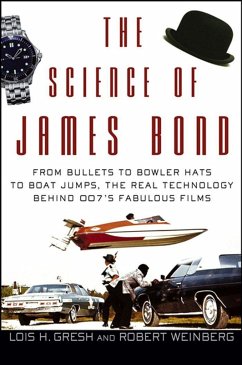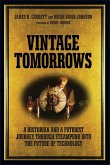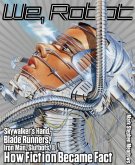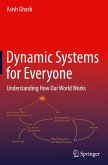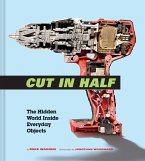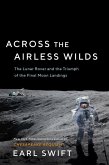James Bond movies have something for everyone--;adventure, action, intrigue, sex, and some of the most exotic hardware ever dreamed up. But can you really build a car that turns into a submarine or an airplane? A bowler hat that, when thrown, can decapitate a statue? A watch that can double as a buzz saw, a Geiger counter, or a TV? Science meets fiction in this lively exploration of Bond gadgets, published to coincide with the release of the next Bond blockbuster. Gresh and Weinberg discuss explosives, communication tools, devious and diabolical weaponry, space lasers, cars, even the martini. Learning what's real, what's not, and what will be is nearly as much fun as watching the movies.
The science behind the gadgets, exploits, and enemies of the world's greatest spy From the sleek Aston Martin that spits out bullets, nails, and passengers at the push of a button to the microjet that makes hairpin turns to avoid a heat-seeking missile, the science and technology of James Bond films have kept millions of movie fans guessing for decades. Are these amazing feats and gadgets truly possible? The Science of James Bond takes you on a fascinating excursion through the true science that underlies Bond's most fantastic and off-the-wall accoutrements. The acclaimed science-fiction authors Lois Gresh and Robert Weinberg provide a highly entertaining, informative look at the real-world achievements and brilliant imaginations behind such singular Bond gadgets as the buzz-saw Rolex, the car that turns into a submarine, and the ever-popular rocket-firing cigarette. They examine hundreds of Q Division's ingenious inventions; analyze Bond's astonishing battles beneath the earth and sea, in the skies, and even in outer space; and ask intriguing questions that lead to enlightening discussions about the limits of science, the laws of nature, and the future of technology. Filled with entertaining anecdotes from Bond movie shoots and supplemented with "tech" ratings for all of the Bond movies, The Science of James Bond separates scientific fact from film fantasy - with some very surprising results.
The science behind the gadgets, exploits, and enemies of the world's greatest spy From the sleek Aston Martin that spits out bullets, nails, and passengers at the push of a button to the microjet that makes hairpin turns to avoid a heat-seeking missile, the science and technology of James Bond films have kept millions of movie fans guessing for decades. Are these amazing feats and gadgets truly possible? The Science of James Bond takes you on a fascinating excursion through the true science that underlies Bond's most fantastic and off-the-wall accoutrements. The acclaimed science-fiction authors Lois Gresh and Robert Weinberg provide a highly entertaining, informative look at the real-world achievements and brilliant imaginations behind such singular Bond gadgets as the buzz-saw Rolex, the car that turns into a submarine, and the ever-popular rocket-firing cigarette. They examine hundreds of Q Division's ingenious inventions; analyze Bond's astonishing battles beneath the earth and sea, in the skies, and even in outer space; and ask intriguing questions that lead to enlightening discussions about the limits of science, the laws of nature, and the future of technology. Filled with entertaining anecdotes from Bond movie shoots and supplemented with "tech" ratings for all of the Bond movies, The Science of James Bond separates scientific fact from film fantasy - with some very surprising results.
Everyone knows which secret agent drives a car that turns into a boat at the flick of a switch, leaves fake fingerprints and, of course drinks his martinis shaken, not stirred: Bond. James Bond. Gresh and Weinberg, having surveyed the science of supervillains and superheroes, turn to Bond and all the wonderful toys conjured up for him by Q, as well as the weapons created by his enemies. They explain how "dirty bombs" work while noting that Goldfinger's plot to contaminate Fort Knox with one wouldn't work, because the radiation would turn gold into liquid mercury. Biological agents were also used by one of Bond's foes. Fortunately, Hugo Drax's Moonraker scheme to destroy humankind with a poison made from orchids was fairy tale stuff. Gresh and Weinberg's book goes up against last year's Death Rays, Jet Packs, Stunts, & Supercars by Barry Parker,, but they write better and their book is more accessible to Bond fans who've forgotten their high school science. Readers might check out the appendix on the Bond martini first, so they'll have something to sip while enjoying this lively read. (Sept.) (Publishers Weekly, June 19, 2006)
"...they write better and their book is more accessible to Bond fans." (Publishers Weekly, June 19, 2006)

